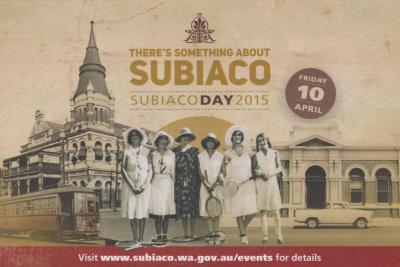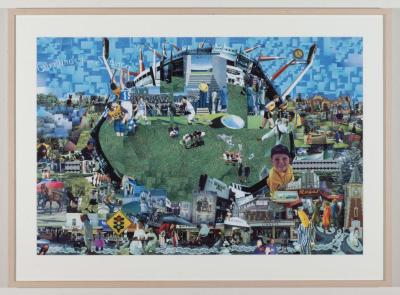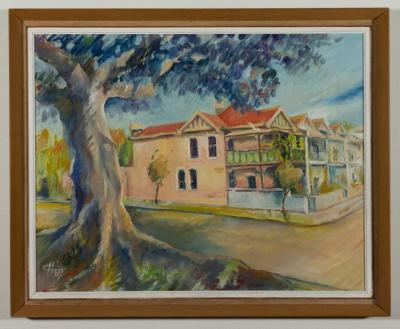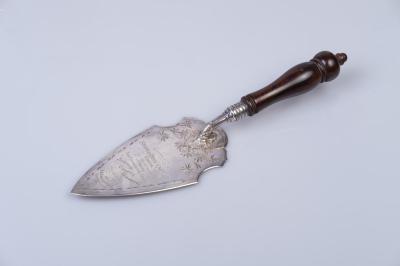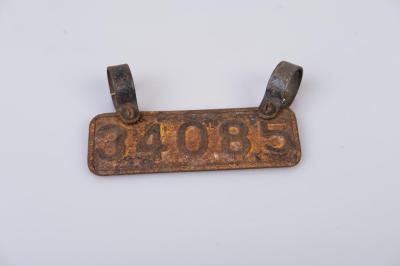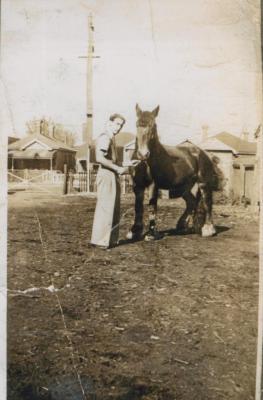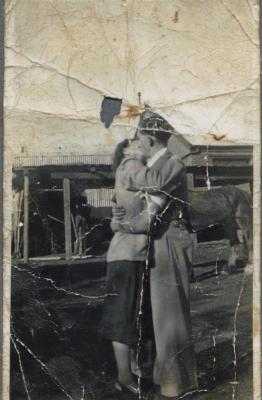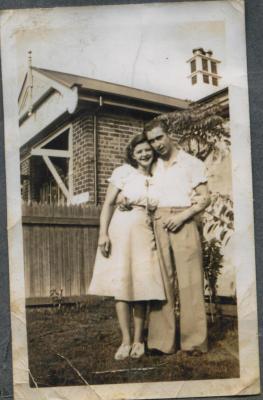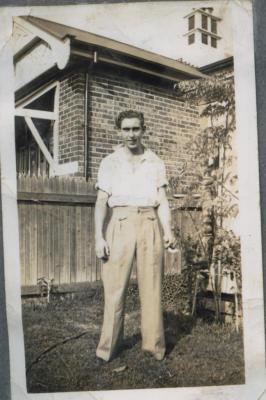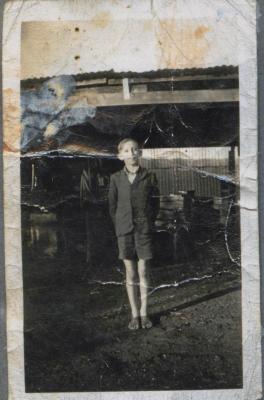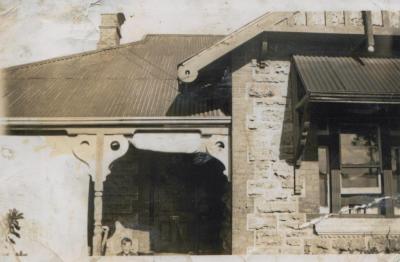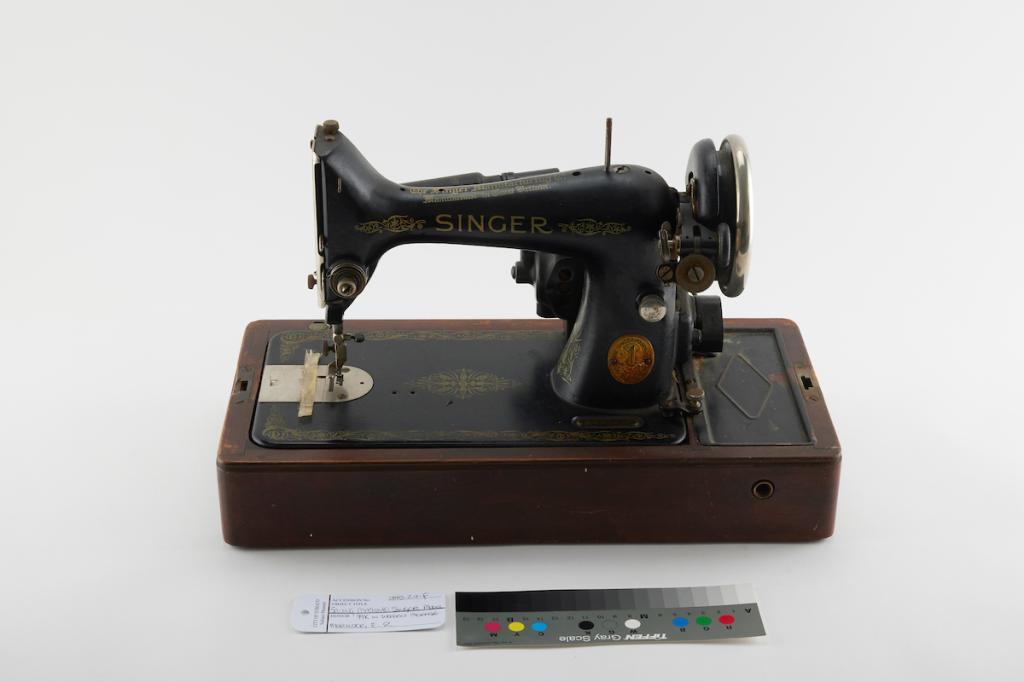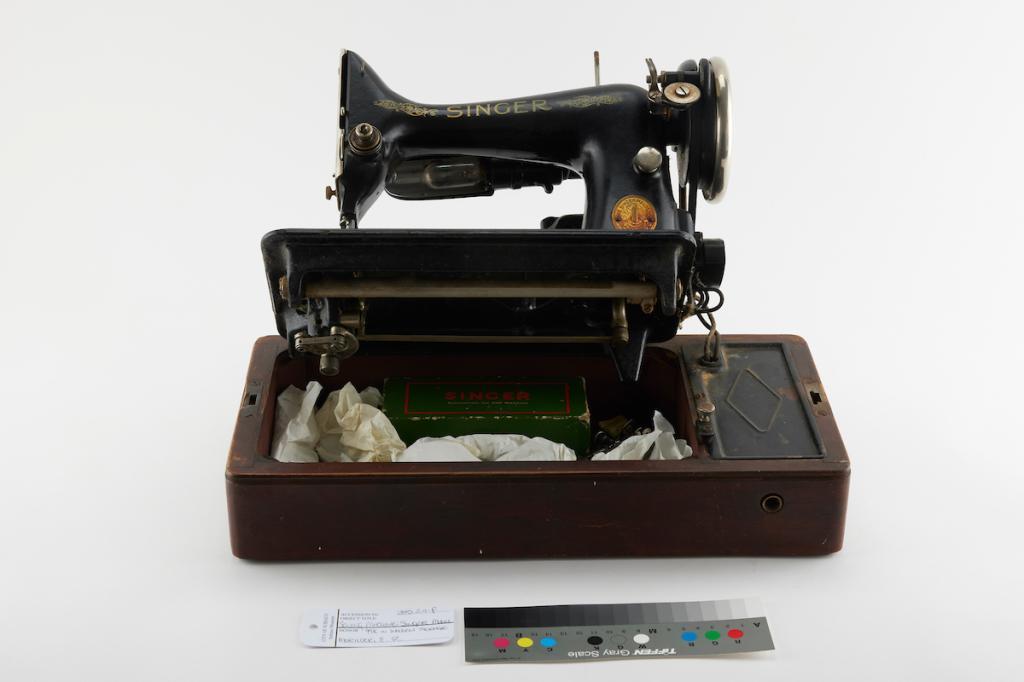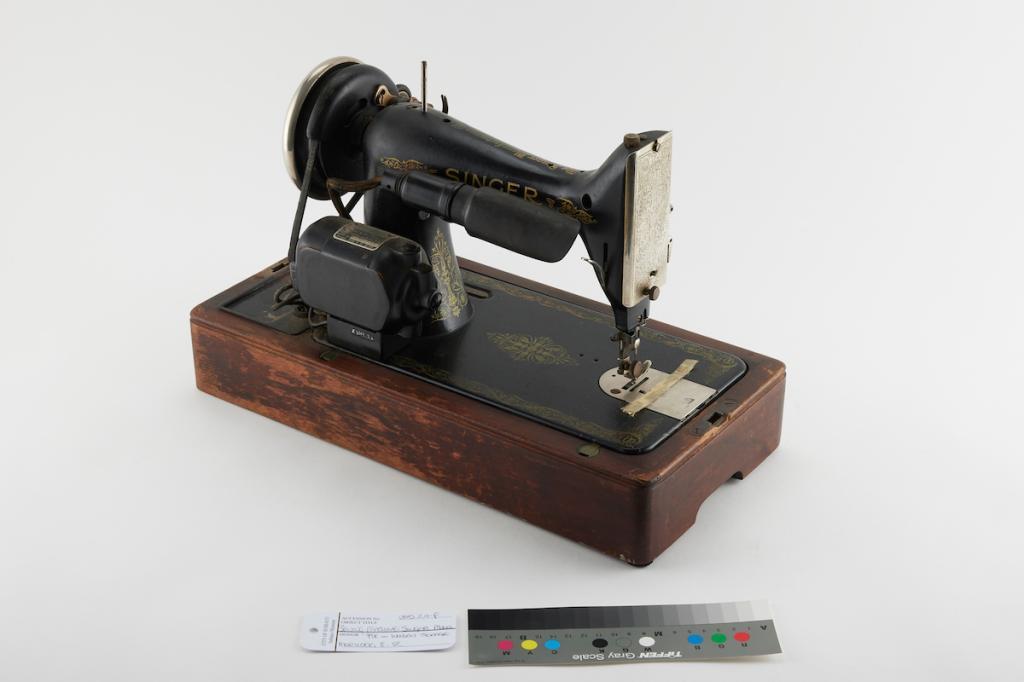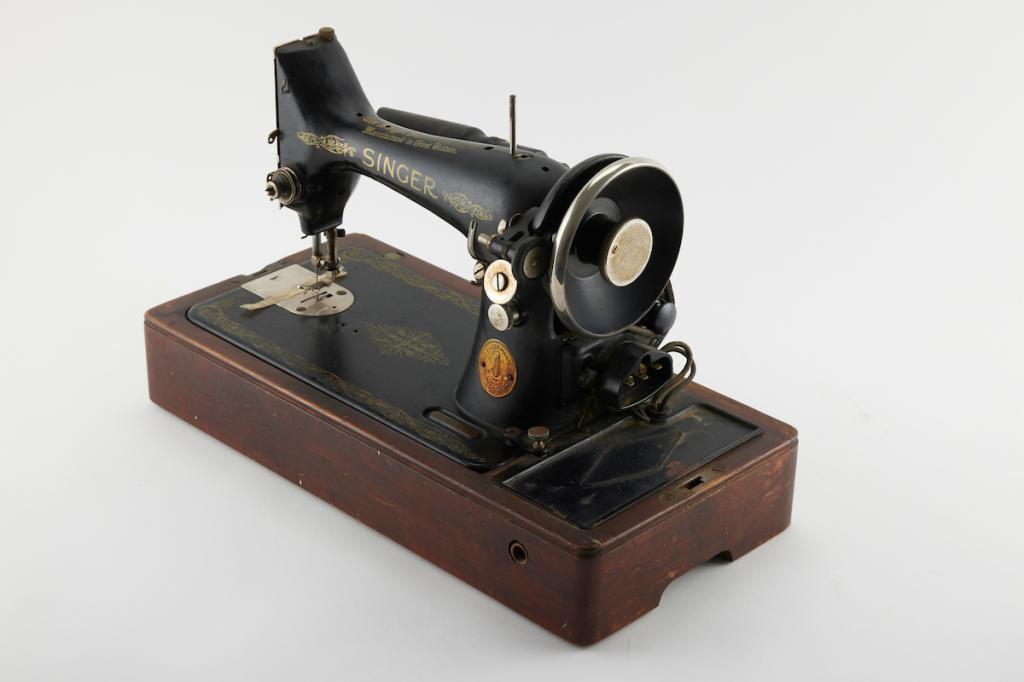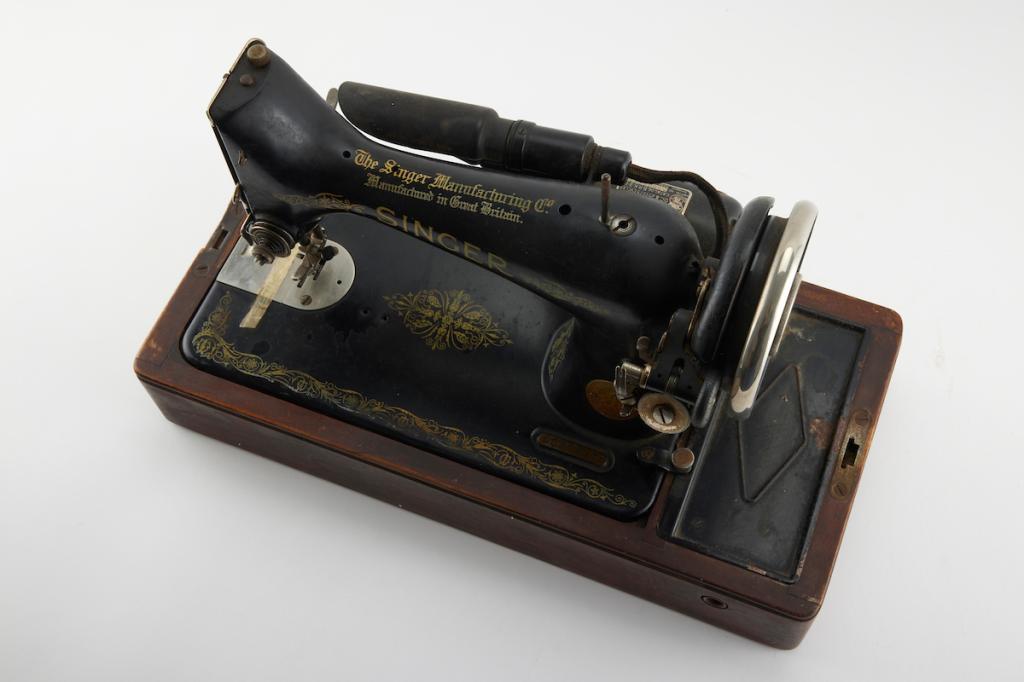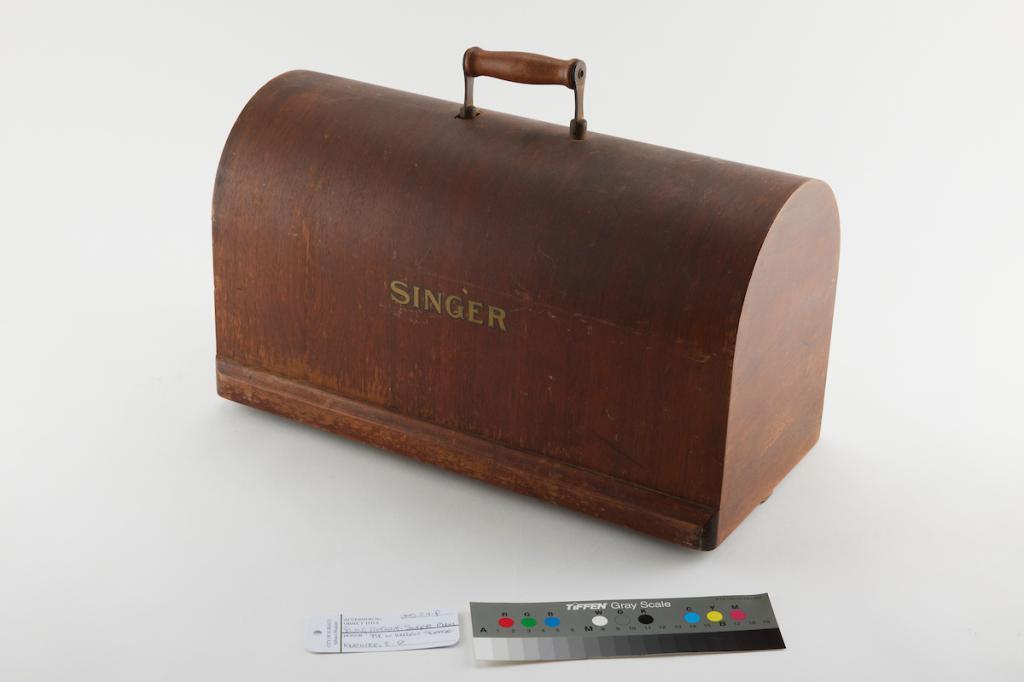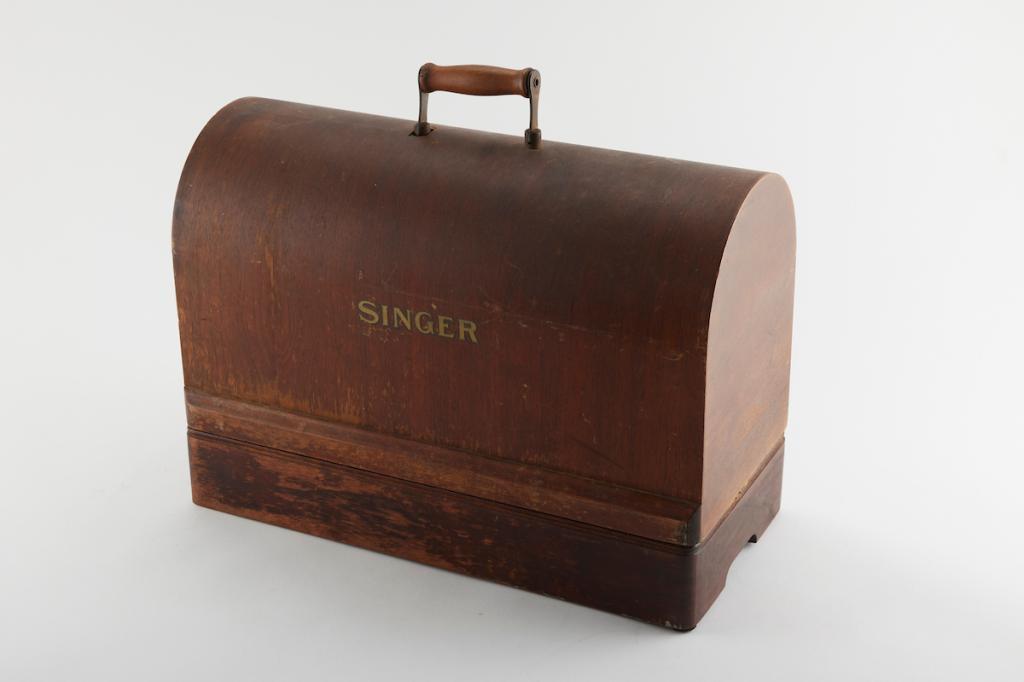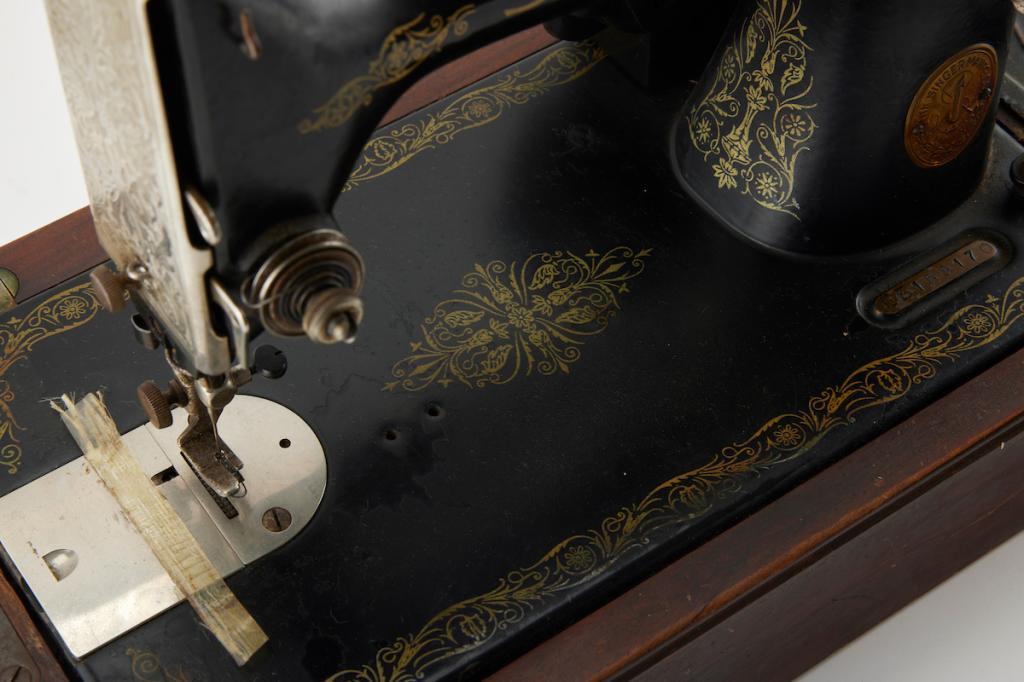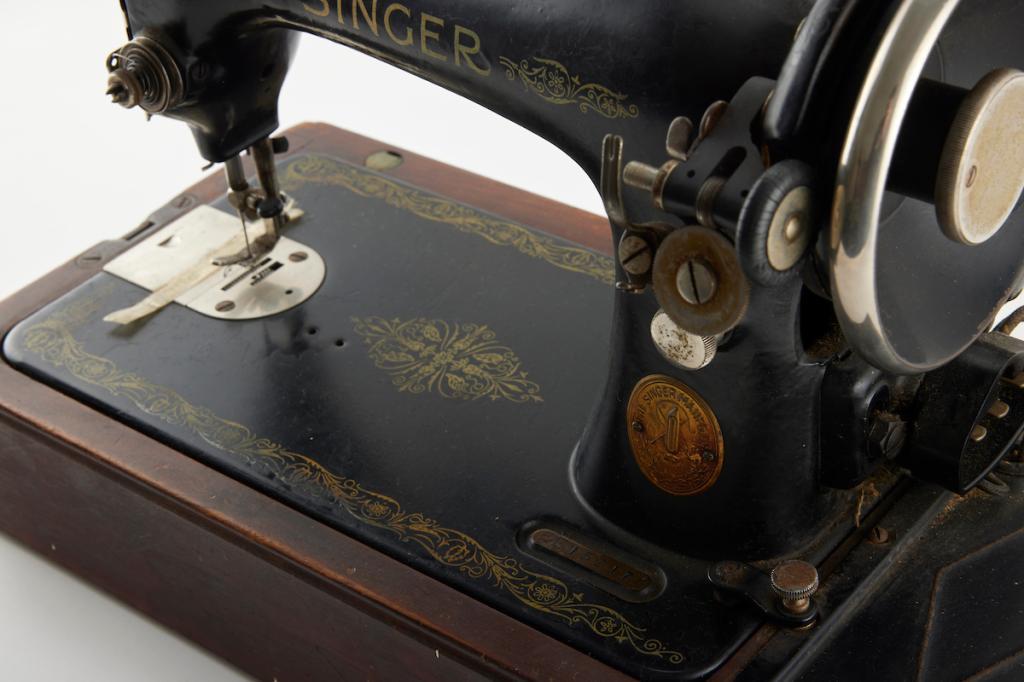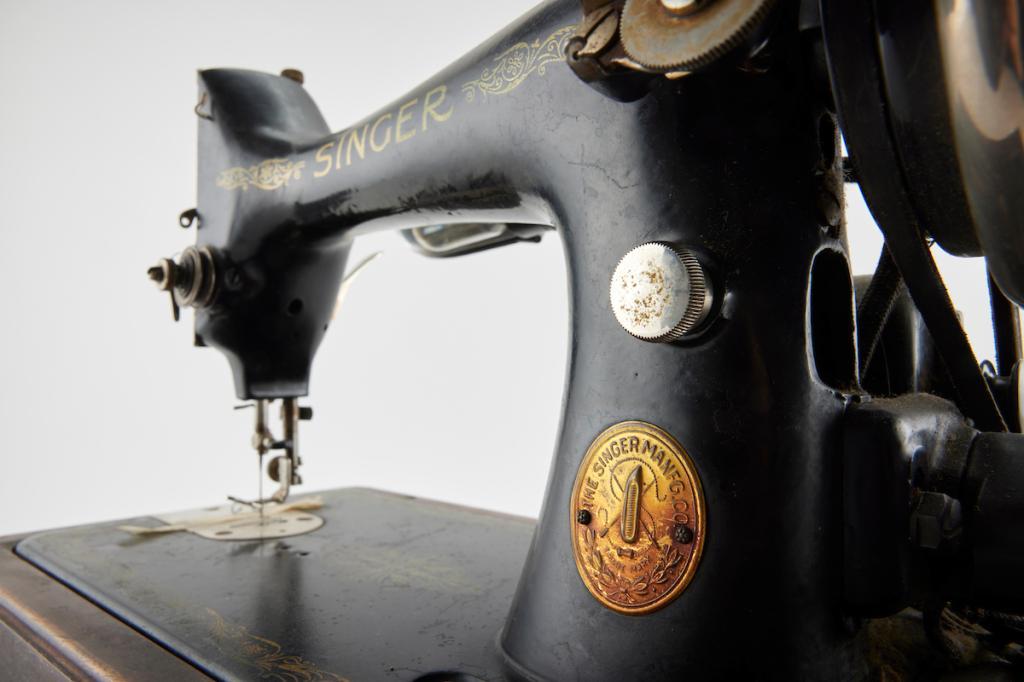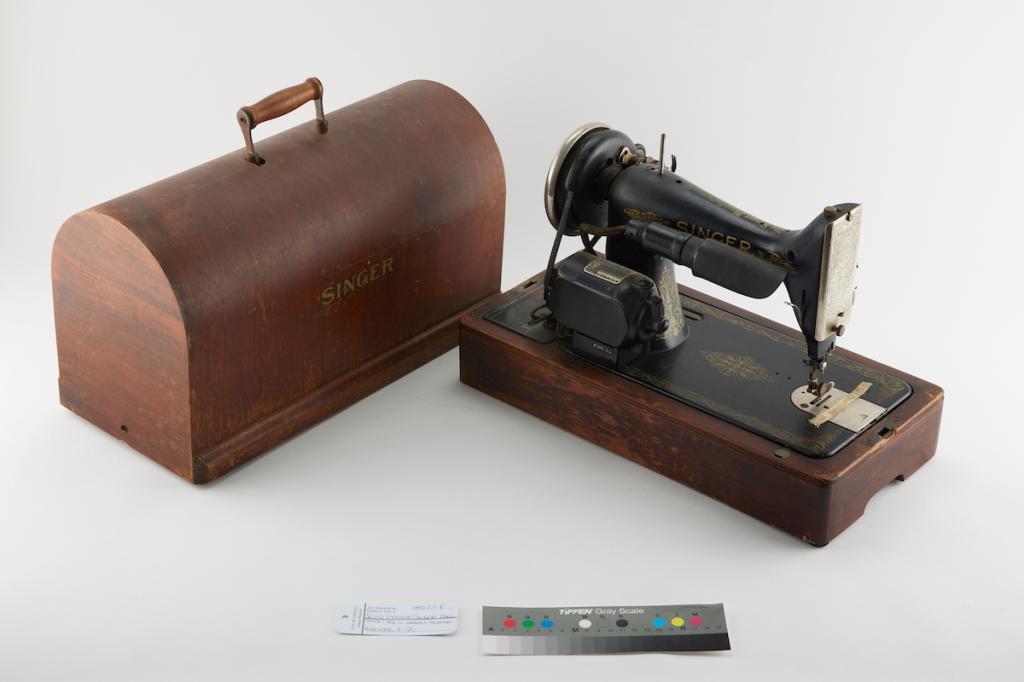SEWING MACHINE: 'SINGER' MODEL 99K WITH WOODEN STORAGE CASE
1947First model of Singer portable electric sewing machine.
a) Portable sewing machine with japanned black paintwork and gold decals on front, inner edge and base of the machine. A decorative metal plate with the same design is inserted on the right hand side of the machine. The name of the beautiful pattern on the Singer 99k was called the ‘Filigree’ 'The Singer Manufacturing Co Manufactured in Great Britain' is printed in decorative gold lettering on the top of the machine. 'Singer' with decorative motifs either side is printed on front of machine. A decorative plaque with Singer emblem is attached to lower right side of machine. Below this on the base is serial number EE 151970. Sewing machine is mounted on wooden base for stability. Underside of sewing machine can be accessed by unscrewing clip on right hand side of machine base and tilting the machine backward. Provision for knee lever on right hand side of wooden base (knee lever not included in donation). Electric Singer motor is at the back of the machine. 230.250 volts. PC and 25 to 75 cycles. Catalog BRK 2-12. Motor No K5866299 Also at the back of the machine is a light with a globe. A reel of black cotton is treaded through to needle. On the left side of the wheel is the bobbin winder. Bobbin case is positioned underneath base of machine accessed by sliding cover. Case contains a bobbin. A transparent strip of tape has been placed on slide above bobbin case possibly as a width marker
b) Square wooden extender with two rounded corners can be attached with metal clip to left edge of machine to enlarge work area. Metal clip allows extender to be inserted in upright position to fit within the storage case
c) black foot operated controller. The top, which is depressed to operate, has raised angled square pattern. On base is label: Singer Foot Control Model FC 1 240v.Suitable for use with motor types WM-WM3-WM5-WM6 d) Electrical lead for foot operated connection. Halfway along lead is an adaptor e) Brentwood storage/carry case. This domed topped cover with handle at the top locks into place on either side on the machine. There is a round hole with metal surround on left side where key to lock case in position is inserted. Key is not among items donated with machine. Inside the case there are metal clips on either side. There is a bracket directly under the handle on the top of the case. One of these may have held can of singer sewing machine oil. In the apex of the arch these are metal clips for holding the knee bar lever (not included with items donated). One end slots into the socket on the left, the other goes into the slot on the right and is held in place with catch f) instruction book for B.R.K. Sewing machine motor.16 page booklet with illustrations
Used by May Thora Mortlock (need Cheffins) from 1950s to 1990s in her house on Bagot Road Subiaco. May was born in a house on Bagot Road and went to school at Subiaco Primary School in 1915.
The Singer 99K sewing machine was introduced in 1911 as a response to the growing demand for a lighter more portable domestic sewing machine that did not need to be used in a special table. The 99K was a ¾ size version of the established full size Model 66K. It used an identical mechanism and many of the same parts other than the basic body casting. The 99K stayed in production until the mid 1950‘s. The Singer 99K was a sturdy and reliable machine that was easy to use. It became very popular with occasional home users because at 22lbs. it was more manageable than ‘full size’ machines and it came in a storage case. In 1921 the company introduced the option of a Singer electic motor making the 99K the first portable electric machine. Early Singer 99K’s were sold in wooden bases with a small compartment under the balance wheel to store accessories and bobbins etc. At first they had ‘Bentwood’ (polished plywood) covers which are now thought of as very desirable The first model 99K’s produced were hand cranks, which could be converted to electricity by the bolting on of an electric motor with either a knee controller or foot controller. Later 99K’s had factory fitted motors, with optional lights and foot controllers and smaller flywheels. was also changed towards the end of its production life; along with the changing of the face plate from the ‘Egyptian’ scroll to the striated version in the mid 1950’s. Perhaps the most obvious design change during the 99K's production was in the mechanism used for adjusting the stitch length. Early models utilised a screw in knob which gave no direct indication of what length had been set. This was later replaced by a lever with graduated scale and finally by a lever with a separate indicator and graduated scale. With these later lever type adjusters, fully raising the lever reversed the feed for back tacking. The overall shape of the machine with its japanned black paintwork and gold decals remained the same, although the decals were ‘modernised’ over time. The feed dogs do not drop and so a feed cover plate is required for the use of the buttonholer or zigzag accessories, or for embroidery or darning etc. All versions take standard low-shank, screw-on feet and sewing machine needle sizes 130H/705H or 15x1 (2020).
Details
Details
The Singer Manufacturing Co Serial EE159170
Historic: First model of Singer portable electric sewing machine.pre 1950
Other items from Subiaco Museum
- BADGE: SUBIACO FOOTBALL CLUB MEMBERSHIP, 1977
- POSTCARD: THERE'S SOMETHING ABOUT SUBIACO - SUBIACO DAY 2015
- PHOTOGRAPHIC COLLAGE: 'GREETINGS FROM SUBIACO'
- PAINTING: 'ROBERTS ROAD, SUBIACO', HAMISH CUMING
- CEREMONIAL STERLING SILVER TROWEL, SUBIACO COUNCIL
- LICENCE: BICYCLE LICENCE PLATE, WITH FIXINGS
- PHOTOGRAPH (DIGITAL): REECE THOMAS NICHOLSON WITH A HORSE
- PHOTOGRAPH (DIGITAL): REECE THOMAS NICHOLSON AND GWENDOLINE JOYCE HARWOOD
- PHOTOGRAPH (DIGITAL): GWENDOLINE JOYCE HARWOOD AND REECE THOMAS NICHOLSON
- PHOTOGRAPH (DIGITAL): REECE THOMAS NICHOLSON
- PHOTOGRAPH (DIGITAL): HILARY MORDEN NICHOLSON (KNOWN AS RAY)
- PHOTOGRAPH (DIGITAL): 111 HAY STREET, SUBIACO

